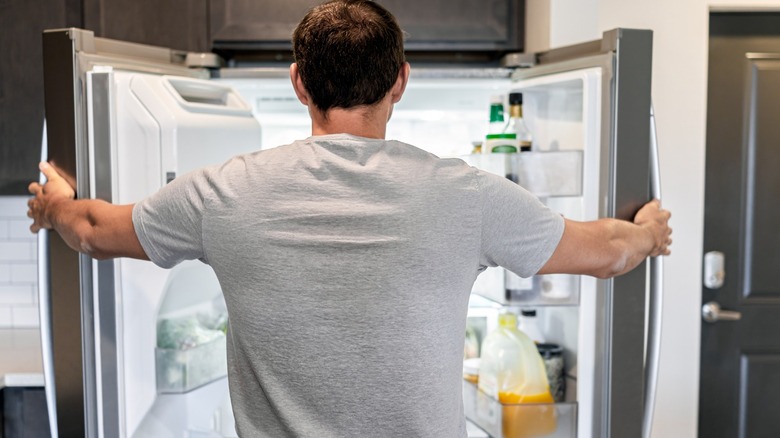When it comes to moving a large appliance like a refrigerator, sometimes removing the doors is necessary to fit through doorways or tight spaces. Whether you’re relocating to a new home, renovating your kitchen, or cleaning behind the fridge, taking off the refrigerator doors can be straightforward if you follow the proper steps. At TheKitchenApplianceDad.com, we understand that handling such tasks can be daunting. Therefore, we’ve prepared a comprehensive guide to help you remove refrigerator doors safely and efficiently.
Before you begin the process of removing the doors from your refrigerator, it’s essential to gather the right tools and ensure safety measures are in place.

The first step is to ensure that the refrigerator is unplugged from the power source. If there is significant frost build-up in the freezer, you might need to defrost it to avoid water mess.
Most refrigerator models have a top hinge cover. Remove this first using a screwdriver to expose the hinge underneath. This cover is typically secured with either screws or clips.
If your refrigerator has a water or ice dispenser in the door, you’ll need to disconnect the water line. Often, there is a quick-release coupling behind the kickplate or the upper hinge cover. You can usually disconnect it by pressing on the coupling’s ring.
Use a wrench or socket set to remove the bolts that hold the top hinge in place. Carefully lift the hinge off and set it aside. Be mindful that once the hinge is off, there’s nothing holding the door in place except its own weight.
Carefully lift the door straight up off the bottom hinge. It might be helpful to have a second person assist with this step to prevent the door from falling. Once removed, set the door aside on a blanket or soft surface to prevent damage.
If you also need to remove the freezer door, repeat the process for the bottom hinge. Depending on your model, the process might be slightly different, so refer to your manufacturer’s manual for specific instructions.
Once the doors are removed, make sure to tape any loose wires or components, and cover the doors with a blanket to prevent scratches during transport or storage.
Reassembling the doors is generally the reverse process of disassembly. However, there are a few key points to keep in mind:
Removing refrigerator doors can be a practical skill that saves time and effort during moves or renovations. By following this guide from TheKitchenApplianceDad.com, you can handle this task with confidence, ensuring your appliance is moved or serviced without any hitches.

